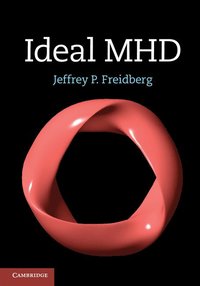
endast ny
Ideal MHD
Comprehensive, self-contained, and clearly written, this successor to Ideal Magnetohydrodynamics (1987) describes the macroscopic equilibrium and stability of high temperature plasmas - the basic fuel for the development of fusion power. Now fully updated, this book discusses the underlying physical assumptions for three basic MHD models: ideal, kinetic, and double-adiabatic MHD. Included are detailed analyses of MHD equilibrium and stability, with a particular focus on three key configurations at the cutting-edge of fusion research: the tokamak, stellarator, and reversed field pinch. Other new topics include continuum damping, MHD stability comparison theorems, neoclassical transport in stellarators, and how quasi-omnigeneity, quasi-symmetry, and quasi-isodynamic constraints impact the design of optimized stellarators. Including full derivations of almost every important result, in-depth physical explanations throughout, and a large number of problem sets to help master the material, this is an exceptional resource for graduate students and researchers in plasma and fusion physics.
Utgiven: 2014
ISBN: 9781107006256
Förlag: Cambridge University Press
Format: Inbunden
Språk: Engelska
Sidor: 740 st
Comprehensive, self-contained, and clearly written, this successor to Ideal Magnetohydrodynamics (1987) describes the macroscopic equilibrium and stability of high temperature plasmas - the basic fuel for the development of fusion power. Now fully updated, this book discusses the underlying physical assumptions for three basic MHD models: ideal, kinetic, and double-adiabatic MHD. Included are detailed analyses of MHD equilibrium and stability, with a particular focus on three key configurations at the cutting-edge of fusion research: the tokamak, stellarator, and reversed field pinch. Other new topics include continuum damping, MHD stability comparison theorems, neoclassical transport in stellarators, and how quasi-omnigeneity, quasi-symmetry, and quasi-isodynamic constraints impact the design of optimized stellarators. Including full derivations of almost every important result, in-depth physical explanations throughout, and a large number of problem sets to help master the material, this is an exceptional resource for graduate students and researchers in plasma and fusion physics.
Ny bok
957 kr1007 kr
5% studentrabatt med Studentapan
Begagnad bok (0 st)
Varje vecka tillkommer tusentals nya säljare. Bevaka boken så får du meddelande när den finns tillgänglig igen.



